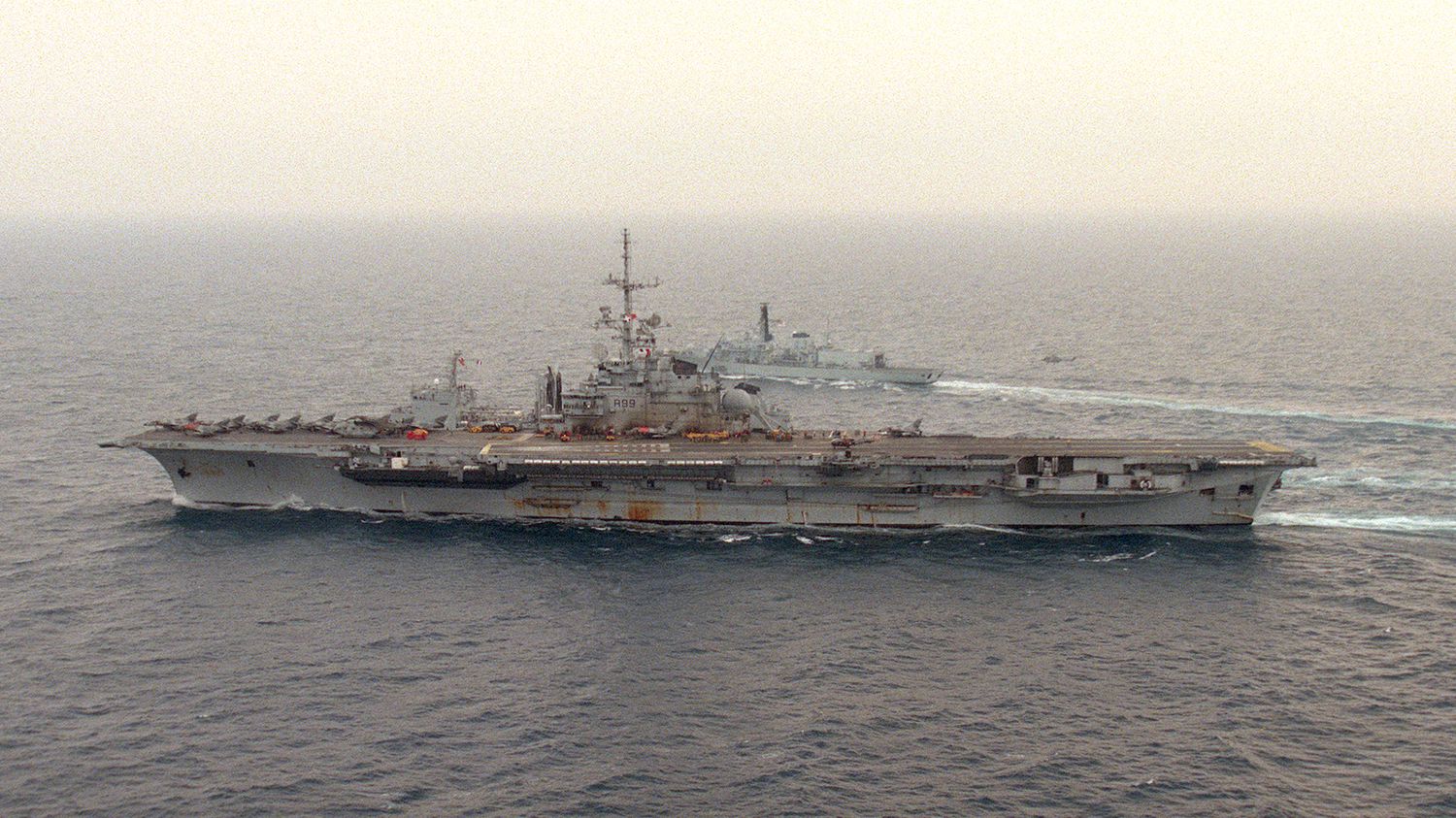His long decline has come to an end. The aircraft carrier Foch, which was the pride of the French Navy, ended its career at a depth of 5,000 meters in the Atlantic Ocean. Brazil, which had bought it in 2000, announced on Friday February 3 that it had sunk the building, which had become too bulky and too polluting.
Its towing was considered too risky by the Brazilian authorities, who considered that, given its degraded condition, “a spontaneous shipwreck” was inevitable. The Navy and Ministry of Defense have identified an area some 350 km off the Brazilian coast, above a sufficiently significant depth, as being “the safest” for this scuttling. Nevertheless, the decision made environmental associations jump. “The Brazilian Navy is preparing to open a new underwater dump”, denounces the NGO Robin Hood, which qualifies the aircraft carrier as “toxic package of 30,000 tonnes”.
A French symbol
Ambassador of his time, the Foch contains a cocktail of the most dangerous metals used in the 1950s. Asbestos, mercury, paints, hydrocarbon residues, PCBs (polychlorinated biphenyls)… Its old hull, 266 meters long, is filled with toxic waste, sAccording to several environmental organizations (in English). According to a report by the Norwegian company Grieg Green, consulted by brazilian media Estadao de Sao Paulo (paid article, in Portuguese)the aircraft carrier today contains 9.6 tons of asbestos, in addition to 644.7 tons of heavy metals present in its paint, as well as 10,000 mercury fluorescent lamps.
However, the aircraft carrier has not always been this ball and chain at the foot of the Brazilian state. Launched in 1959, it was for 37 years the showcase of the French Navy abroad. A national pride, coming out of the Saint-Nazaire shipyard, which France has brandished as a tricolor flag in international waters. Capable of catapulting 12 to 15 tonne aircraft at a take-off speed of 150 knots, the Foch notably took part in NATO air operations in Yugoslavia in the spring of 1999. Until the brand new nuclear-powered aircraft carrier, the Charles de Gaulleeclipses the Foch and its twin, Clemenceau.
A “breathless” aircraft carrier
Retired, the French authorities for a time considered turning it into a museum. The project, supported by the Amicale des Anciens du Clemenceau and Fochwas eventually dropped, recalled The world (article for subscribers) in September. “The French like to keep old stones, but not old scrap”then regretted Francis Sauve, the head of the association.
THE Foch was then sold to Brazil, which renamed it Sao Pauloin 2000. The aircraft carrier was already “breathless”according to the NGO Robin des Bois, which believes that France has a share of responsibility in the current sinking. “Instead of dismantling the aircraft carrier Fochshe ceded it to the Brazilian Navy”, denounces the association. Decrepit, the building would have required costly modernization works. THE Foch therefore became a poisoned package. A series of technical problems, linked in particular to a fire in 2005, convinced Brasilia to get rid of it.
A long wandering
In the spring of 2021, Brazil resold it at a low price to a Turkish shipyard. But impossible to find a port ready to welcome it to start its dismantling. The new owner of the ship threatens to abandon it at sea. In June 2022, he finally obtains the authorization to convoy it to Turkey to dismantle it.
The aircraft carrier sets sail again, crosses the Atlantic, arrives at the Strait of Gibraltar, between Spain and Morocco, when Turkey backtracks: the aircraft carrier is no longer welcome. Ankara fears that it contains much more asbestos than expected. Back to square one. Except that the Sao Paulo no longer has the right to land in Brazil. The voyage worsened the condition of her hull, according to a report seen by theEstadao de Sao Paulo. “The document indicates that the damage is likely related to the interaction with waves, salt and wind during the 72 days of navigation on the high seas” in the Atlantic.
Then begins a long wandering, in search of a new port of welcome. In vain. The ship was still going around in circles, not far from the Brazilian coast, when on January 20, the authorities decided to move it away 300 kilometers from the coast. With the objective of sinking it. “The Brazilian Navy should be condemned for negligence”estimates the NGO Basel Action Network, which fights the export of toxic waste. “If they sink this highly toxic vessel in the middle of the Atlantic, they will violate three international environmental treaties for no good reason”, accuses the director of the association, Jim Puckett. But for Brazil, the decision is made. When no one wants him anymore, the aircraft carrier ends its life at the bottom of the ocean.
